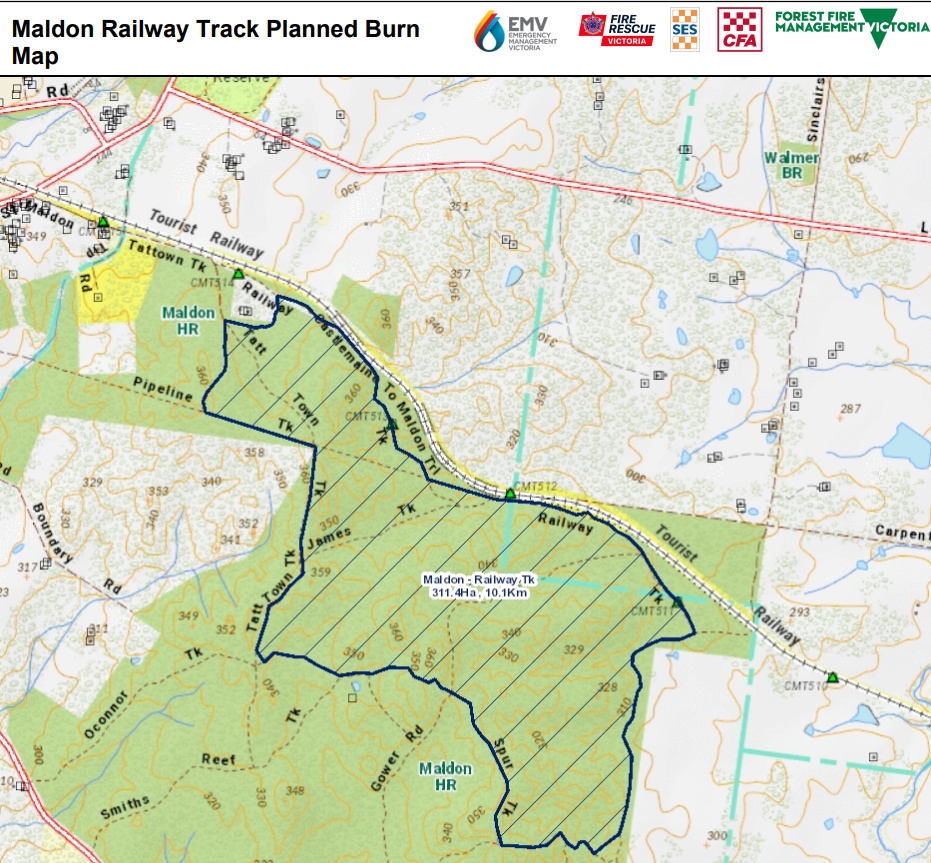One peculiarity of the proposed Maldon Historic Reserve fire is that it is partly designed to protect the railway and private property on the north side of the railway line. Yet the briefest look at the map below will show something very strange: namely, that the north side of the line is bordered by a significant area of private bushland—for which no fuel reduction program is planned.
Here’s a question: if the bush on the south side of the line needs to be fuel reduced, why doesn’t the bush on the north side?
Or: if the bush on the north side doesn’t need to be fuel reduced, why does the south side?
Logically you’d burn both sides of the line…or neither.
Would a fire approach a fence and say to itself, ‘Oh. Private land. I can’t go there.’ ?
The questions relate to a longstanding but very inconsistently implemented policy: Tenure blind fire management.
The Auditor General’s 2020 report on Reducing Bushfire Risk had this to say:
‘While agency roles and responsibilities are well defined for public land, they are not for private land. Consequently, tenure-blind burning has exposed some uncertainty that did not previously exist. DELWP and CFA have worked together to resolve initial concerns about liability regarding tenure-blind burns. Following a project to identify policy and legislative enablers to support tenure blind burning, the agencies updated their cooperative arrangement and communicated outcomes to staff.
‘However, they are yet to resolve issues about how tenure-blind burns are funded. DELWP and CFA advised us that while tenure blind burns are crucial for risk reduction, they cost more because they:
- are generally close to assets
- involve high levels of community engagement
- require more staff resources due to the increased risk to human life
- include paid DELWP staff, not just CFA volunteers.
‘This issue requires resolution to support more of this work to occur.’





 Click on image for info/order page
Click on image for info/order page Click on image for info/order page
Click on image for info/order page Click on image for info/order page
Click on image for info/order page




















